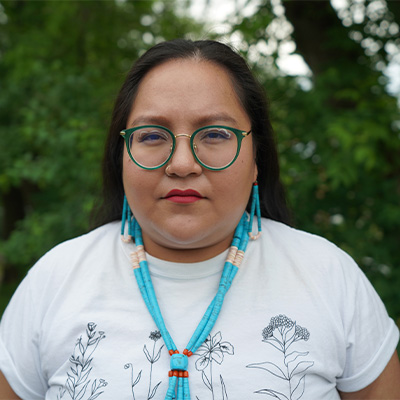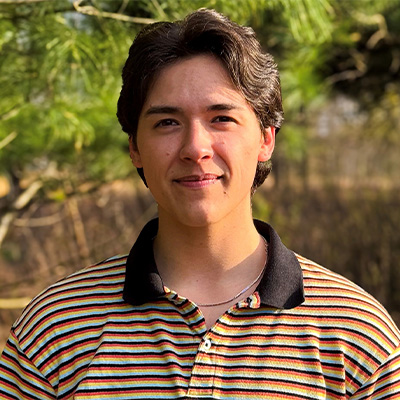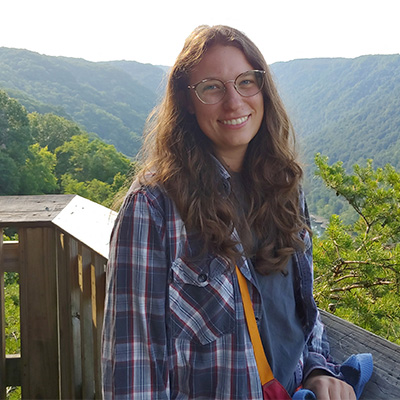Cranberry Lake Biological Station
Indigenous Writer in Residency
About the Program
The CLBS Indigenous Writer in Residence program began in 2022. Its creation was spurred by the work of Dr. Robin Wall Kimmerer who has and continues to draw inspiration from and write at Cranberry Lake Biological Station. The residency seeks to provide Indigenous writers with the space, time, and place to explore their creative endeavors.
The Residency
Cranberry Lake Biological Station is located in the heart of the Adirondack Park, on the ancestral lands of the Mohawk Nation of the Haudenosaunee Confederacy and has been in use as a living classroom for 105 years. CLBS provides seclusion for research, teaching, contemplation, and creative endeavors.
Three, three−week residencies are available each year, with some flexibility based on the writer's schedule: late May – mid- June, mid-June – early July, and mid-July – early August. Housing, meals, and a workspace will be provided, in addition to a $1000 travel stipend. The resident will also have access to all facilities including canoes, classroom spaces, microscopes, and the ability to join classes if desired. Additional needs and requests will be considered on a case−by−case basis. The residency is jointly supported by the Center for Native Peoples and the Environment and Cranberry Lake Biological Station.
Applications for Summer 2026 will open on December 15, 2025 close on February 15, 2026. To receive updates about the program sign up for the CLBS mailing list below.
Meet the 2025 Writers in Residence
Brenna Yellowthunder is Diné, Hočak, and Standing Rock Lakota from Flagstaff, AZ and Black River Falls, WI. They are an award winning writer with publications in Saving Earth Magazine, the Timberline Review, and more forthcoming. They are a recipient of the Kay Snow Award for Fiction, the Michael Collier Scholarship to the Bread Loaf Environmental Writers Conference, and the LGBTQ Fellowship for Spring Residencies 2025 at the Sundress Academy for the Arts. Brenna’s upcoming novel, 10,000 Moon Could Never Be Enough was longlisted for the First Pages Prize in Fiction 2024, and an honorable mention in CRAFT First Chapters Contest 2024. Brenna lives in Oregon with her partner and their cat, Gizmo.
She began her career fighting environmental racism in her tribal homelands from the age of 13. Since then, Brenna has focused her work on uplifting voices that often go unheard. This includes work in grassroots organizing with movements, museum consultation on behalf of Native communities, and a passion for working with Native youth. She holds a BA in Art History & Visual Culture Studies from Whitman College, with a focus on Tribal Museums and the Politics of Display.

Elliott Chemberlin (Mohawk, Six Nations of the Grand River) believes that writing can be a means of envisioning, expressing, and building Haudenosaunee sovereignty. Guided by this belief, he has written research papers, short stories, grant proposals, songs, letters, and other words as part of an ongoing effort to be a good relative and an advocate within his community. Born in Minnesota and raised in Michigan, he is grateful for the opportunity to travel to traditional Mohawk homelands at Cranberry Lake Biological Station this summer. At Cranberry Lake, Elliott hopes to deepen his land-based writing practice while working on a creative nonfiction piece about Onondaga competitive distance runner Tom Longboat. Immediately following the residency, Elliott will begin his MFA in Creative Writing at the Institute of American Indian Arts.

Marie Burdett (Cherokee, Shawnee) is a poet and gardener who is fascinated by wetlands, botany, and the connection of native peoples to their homeland. She is currently an MFA student at the University of St. Thomas, Houston. Her work has been featured or is upcoming in Lucky Jefferson, Cypress Dome Literary Magazine, SAGE Magazine, Light, Deep Wild Journal, and The Nature of Our Times. Her work at Cranberry Lake will begin a collection of poems centered around wetlands.

Past Writers in Residence
2024
Leslie Logan
Miccki Garrity
Taylor Rae
2023
Abraham Francis
Shaawan Francis Keahna
Skylar Kahentakwas Fetter
Gillian Herrera
2022
Stephanie Morningstar
Erica Wood
